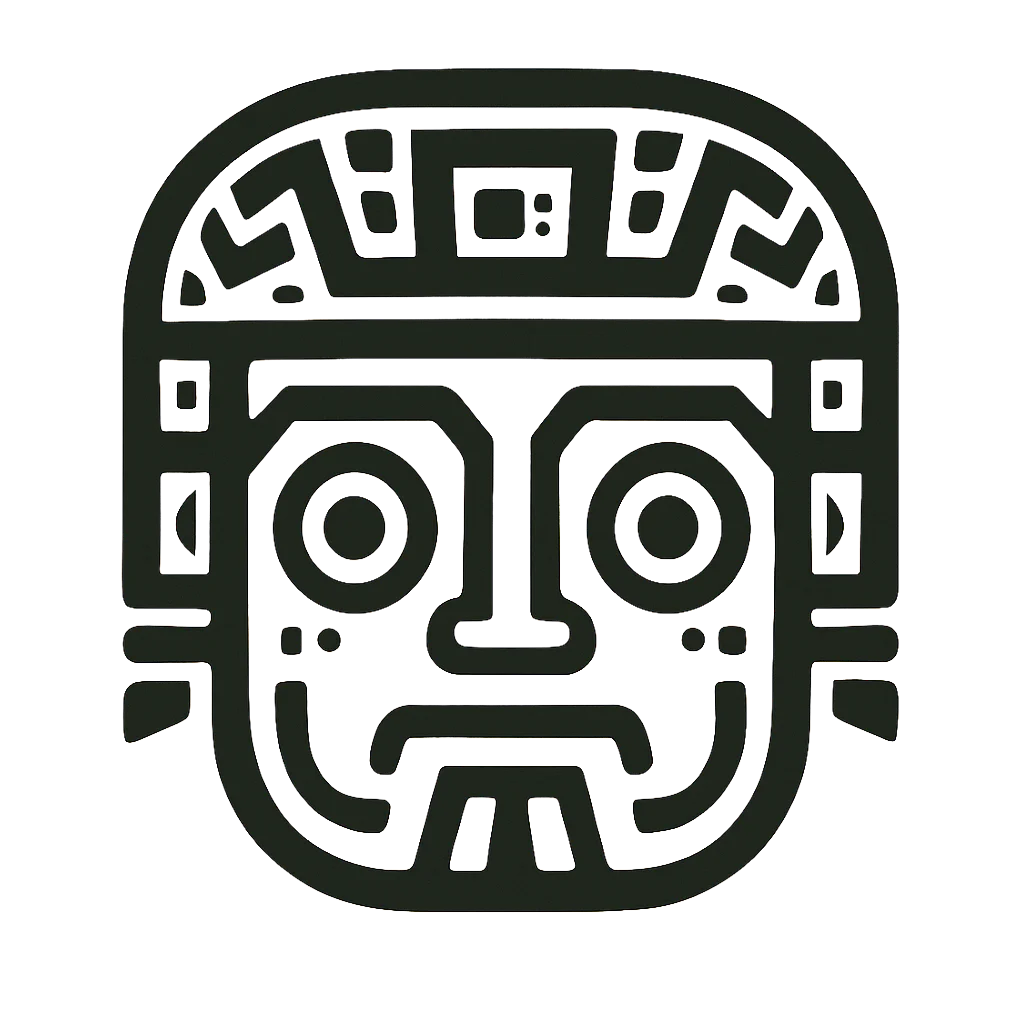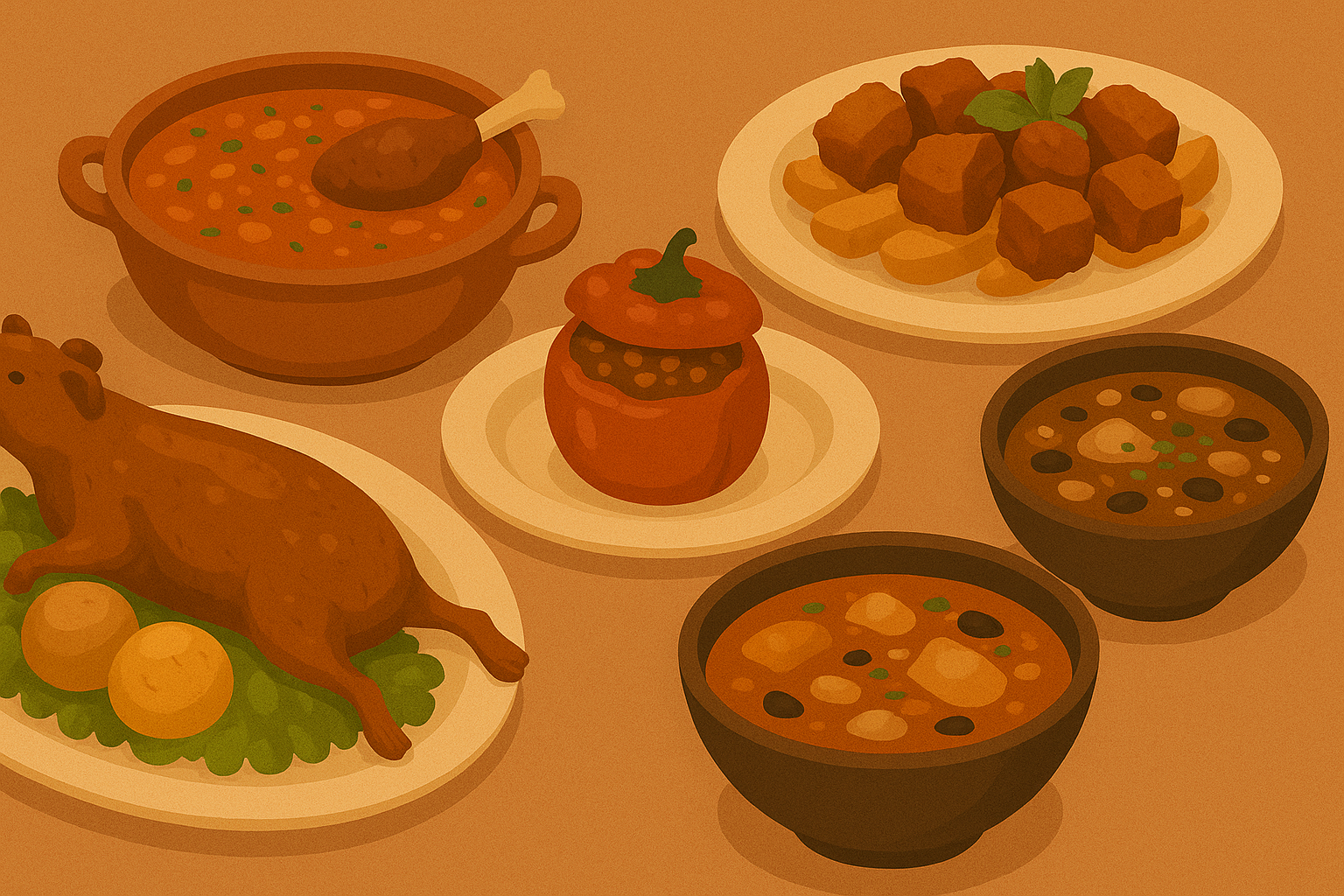When you visit Cusco, you will marvel not only at its landscapes and ancient ruins, but also at the culinary experience that awaits you. A culinary experience awaits you as well. Typical cusqueña food is a reflection of its millenary history, its diverse geography and its deep cultural legacy.
From dishes served during patron saint festivals to recipes passed down from generation to generation, every bite tells a story. Here we present 10 traditional dishes you must try if you are in Cusco. Not only will you feed your body, but you will connect with the soul of the Andes.
🥙Chiri Uchu
El Chiri Uchu is Cusco's flagship dish. Its name comes from the Quechua language: Chiri = cold, uchu = chili, i.e., “cold chili” or “cold hot bell pepper”. It is consumed on key dates such as the feast of San Sebastián (January) and Corpus Christi (June).
It is a combination of coastal, highland, and jungle ingredients: huevera, cochayuyo (seaweed), chicken, guinea pig, blood sausage, jerky, cheese, potatoes, corn, torrejas, canchitas, and rocotos. It is eaten with the hands.
💡 Fun Fact: This dish was an offering to the Sun God (Inti) and is served cold as a symbol of respect, since the heat is only provided by the divinity.
Read more: Chiri Uchu: History, Meaning and Preparation

🍲Adobo Cusqueño
El Adobo Cusqueño this thick, spicy soup is ideal for starting the day. It is made with pork marinated in chicha de jora and spices and cooked slowly until it develops a rich flavor.
It is traditionally consumed as an energizing breakfast before 10:00 a.m. in the cold Cusco dawn.
💡 Fun Fact: Although there are variations of adobo in other regions, such as Arequipa, Cusquenian adobo is distinguished by its acidic flavor and thick consistency.
Read more: Cusquenian Adobo: History, Preparation and Differences

🍖Cuy al Horno
This is a classic dish in the towns of Tipón and Lamay. The guinea pig is seasoned with herbs like huacatay, then stuffed and baked until it is golden brown and crispy. It is served with baked potatoes and noodles.
Variants: Cuy al palo (grilled guinea pig) and cuy chactado (fried in oil).
💡 Fun Fact: The guinea pig was domesticated more than 3,000 years ago and its meat is rich in protein, low in fat and considered medicinal by Andean communities.
Read more: Baked Guinea Pig: History, Importance, and Preparation

🐷Lechón Cusqueño
Present in all festivities, the lechón cusqueño is marinated and slow baked pork, served with tamale, moraya, bread and chili cream.
💡 Fun Fact: The best suckling pig you can find in Cusco is eaten in Huarocondo, known as “The Land of Lechón”.
Read more: Lechón Cusqueño: History, Importance and Preparation

🍲 Quinua Soup
Light, nutritious and comforting. Ideal for your first day in Cusco, as it helps in acclimatization thanks to its combination of quinoa, vegetables, potato, meat and cheese.
💡 Fun Fact: Quinua is considered a “superfood” and you can even find it in breakfasts at local markets.

🐟 Fried Trout
Raised in the highlands of Cusco and Puno, trout is one of the most consumed fish in the region. It is served fried, accompanied by potatoes, rice, mote and salad.
💡 Fun Fact: Although trout is not native to the Andes, its rearing in fish farms has generated a sustainable culinary industry.

🐷 Paw bramble
Made with cooked pork feet and accompanied by a bramble of onion, tomato and rocoto. It is seasoned with chicha de jora, cumin and lemon.
💡 Fun Fact: It is said that this dish arose from the Afro-Peruvian fusion during the colony. There is also an Arequipa version with differences in flavor and presentation.
Read more: Cusquenian Paw Bramble: History, Importance and Preparation

🍐 Chupe of Pears
Emblematic dish of the district of San Sebastián, served in its patronal feast. It is a thick soup with corn, potato, cheese, egg cup, pumpkin and cooked pears.
💡 Fun Fact: The “chupe” is a coastal tradition, but its mountain version incorporates local ingredients creating a unique fusion.
Read more: Chupe of Pears: History, Importance and Preparation

🫛Broad Beans Kapchi
A powerful vegetarian option. This thick stew combines beans, potatoes, fresh cheese and, in some cases, mushrooms. It is served hot and is ideal in cold weather.
💡 Fun Fact: In Quechua, "kapchi" means "stew." It is one of the simplest and most comforting dishes in Andean cuisine.
Read more: Broad Beans Kapchi: History, Benefits and Preparation

🐑Puchero
Typical dish of the Cusquenian carnival, especially on the days of Compadres and Comadres. It is made with lamb, cabbage, peaches, yucca, potatoes, and chickpeas.
💡 Fun Fact: Unlike the Spanish puchero, which is a soup, the Cusco puchero is served dry and separate from the broth as part of a ritual of abundance.
Read more: Puchero or T'impu: History, Curiosities and Preparation

🌄 And you, which one will you try first?
Share this guide with your travel companions — they won't want to leave Cusco without trying these gastronomic treasures!

